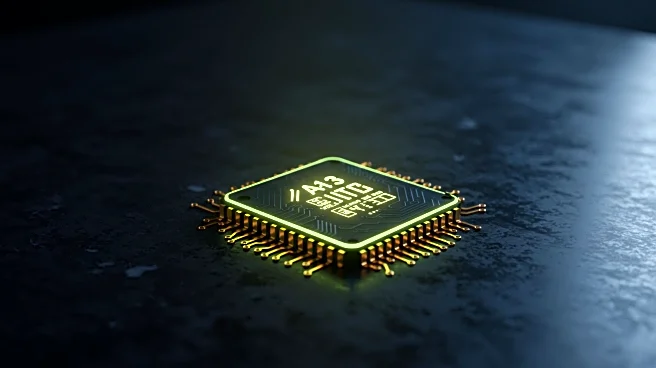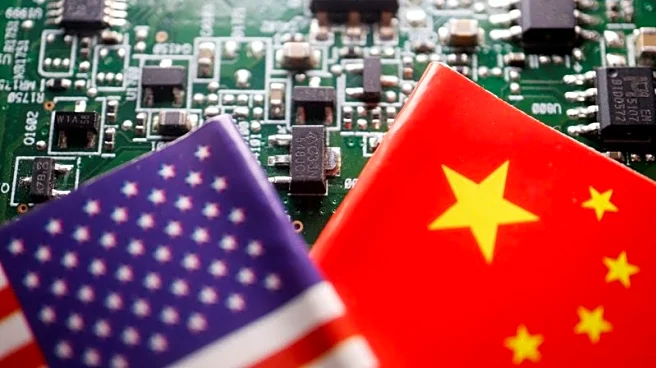What's Happening?
China is advancing its AI semiconductor self-sufficiency strategy, aiming to reduce reliance on U.S. technology by 2025. This involves strategic investments in domestic chip design, manufacturing, and infrastructure. Key components include Huawei's Ascend series and SMIC's 7nm chips, which are central to reducing dependence on U.S. GPUs. Despite performance gaps compared to Nvidia's A100 or H100, these chips are increasingly viable for mid-tier AI applications. Additionally, domestic frameworks like Huawei's MindSpore and Baidu's PaddlePaddle are being developed to replace global tools such as PyTorch and TensorFlow, although integration challenges remain. Infrastructure projects like the National Integrated Computing Network are expanding China's AI compute capacity, enabling localized training and deployment of large language models.
Why It's Important?
China's push for AI semiconductor self-sufficiency has significant implications for U.S. tech giants like Nvidia and AMD. The strategy is driven by national security concerns and economic resilience, aiming to counter U.S. export controls. For U.S. firms, this presents both opportunities and risks. While the strategy could lead to near-term revenue growth in China's vast market, it also poses long-term risks due to geopolitical tensions and technological divergence. U.S. firms have responded by agreeing to revenue-sharing deals with the U.S. government to retain market access in China, but this approach is fraught with potential security and reputational risks.
What's Next?
The future of U.S. semiconductor firms in China hinges on their ability to navigate geopolitical dynamics and technological shifts. If China achieves significant self-sufficiency in AI semiconductors, U.S. firms could lose market share. Additionally, the rise of alternative architectures like RISC-V in China could fragment global standards. Investors are advised to balance exposure to U.S. semiconductor firms with diversification into adjacent markets and alternative technologies to mitigate risks.
Beyond the Headlines
China's AI semiconductor strategy is reshaping global supply chains, creating a multipolar landscape where U.S., Chinese, and potentially European firms compete for dominance. This evolution is not just a binary contest between East and West but a complex game of innovation, policy, and resilience. The long-term trajectory of U.S. firms depends on their ability to adapt to this new era of fragmented global supply chains.












